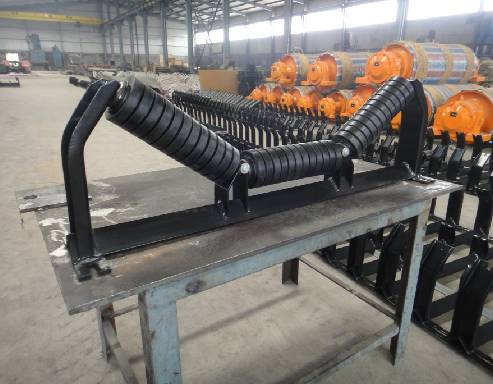 Afrikaans
Afrikaans  Albanian
Albanian  Amharic
Amharic  Arabic
Arabic  Armenian
Armenian  Azerbaijani
Azerbaijani  Basque
Basque  Belarusian
Belarusian  Bengali
Bengali  Bosnian
Bosnian  Bulgarian
Bulgarian  Catalan
Catalan  Cebuano
Cebuano  Corsican
Corsican  Croatian
Croatian  Czech
Czech  Danish
Danish  Dutch
Dutch  English
English  Esperanto
Esperanto  Estonian
Estonian  Finnish
Finnish  French
French  Frisian
Frisian  Galician
Galician  Georgian
Georgian  German
German  Greek
Greek  Gujarati
Gujarati  Haitian Creole
Haitian Creole  hausa
hausa  hawaiian
hawaiian  Hebrew
Hebrew  Hindi
Hindi  Miao
Miao  Hungarian
Hungarian  Icelandic
Icelandic  igbo
igbo  Indonesian
Indonesian  irish
irish  Italian
Italian  Japanese
Japanese  Javanese
Javanese  Kannada
Kannada  kazakh
kazakh  Khmer
Khmer  Rwandese
Rwandese  Korean
Korean  Kurdish
Kurdish  Kyrgyz
Kyrgyz  Lao
Lao  Latin
Latin  Latvian
Latvian  Lithuanian
Lithuanian  Luxembourgish
Luxembourgish  Macedonian
Macedonian  Malgashi
Malgashi  Malay
Malay  Malayalam
Malayalam  Maltese
Maltese  Maori
Maori  Marathi
Marathi  Mongolian
Mongolian  Myanmar
Myanmar  Nepali
Nepali  Norwegian
Norwegian  Norwegian
Norwegian  Occitan
Occitan  Pashto
Pashto  Persian
Persian  Polish
Polish  Portuguese
Portuguese  Punjabi
Punjabi  Romanian
Romanian  Russian
Russian  Samoan
Samoan  Scottish Gaelic
Scottish Gaelic  Serbian
Serbian  Sesotho
Sesotho  Shona
Shona  Sindhi
Sindhi  Sinhala
Sinhala  Slovak
Slovak  Slovenian
Slovenian  Somali
Somali  Spanish
Spanish  Sundanese
Sundanese  Swahili
Swahili  Swedish
Swedish  Tagalog
Tagalog  Tajik
Tajik  Tamil
Tamil  Tatar
Tatar  Telugu
Telugu  Thai
Thai  Turkish
Turkish  Turkmen
Turkmen  Ukrainian
Ukrainian  Urdu
Urdu  Uighur
Uighur  Uzbek
Uzbek  Vietnamese
Vietnamese  Welsh
Welsh  Bantu
Bantu  Yiddish
Yiddish  Yoruba
Yoruba  Zulu
Zulu Impact Bed Solutions for Conveyor Systems to Enhance Material Handling Efficiency
The Importance of Conveyor Impact Beds in Material Handling
In the realm of material handling, conveyor systems play a pivotal role in the efficient movement and transportation of various types of materials, from bulk goods to packaged products. Among the many components that make up these systems, conveyor impact beds are crucial for enhancing performance, safety, and longevity of the conveyor operation. This article delves into the importance of conveyor impact beds, their functionality, and the benefits they provide in industrial environments.
Understanding Conveyor Impact Beds
Conveyor impact beds are specialized support structures located underneath the conveyor belt in areas where heavy materials are transferred. They serve to cushion the conveyor belt during the loading process, particularly when bulk materials are dropped from a height onto the belt. Without an impact bed, the constant jarring of heavy loads can lead to wear and tear on the conveyor system, resulting in frequent maintenance and increased downtime.
Functionality of Impact Beds
The primary function of an impact bed is to absorb the energy generated by falling materials. Typically constructed from durable materials such as rubber or polyurethane, these beds are designed to withstand high impact forces while providing a stable surface for the conveyor belt to rest upon. The design often includes adjustable impact bars, allowing operators to customize the setup based on the specific materials being conveyed. This adaptability is essential in industries such as mining, agriculture, and manufacturing, where diverse materials are handled and processed.
Another key feature of impact beds is their ability to align the conveyor belt correctly. Misalignment can lead to excessive friction and uneven wear on the belt, potentially leading to catastrophic failures. Impact beds help to keep the belt centered, extending its lifespan and ensuring smooth operation.
Benefits of Using Conveyor Impact Beds
conveyor impact bed

1. Enhanced Durability By absorbing shocks and impacts, conveyor impact beds significantly reduce the wear and tear on conveyor belts and other components, translating to increased longevity and reduced maintenance costs.
2. Improved Safety Conveyor systems can pose safety hazards, particularly when heavy materials are involved. Impact beds help minimize these risks by reducing the likelihood of belt damage and potential load spills, thereby creating a safer work environment.
3. Operational Efficiency When conveyors operate smoothly without excessive maintenance interruptions, productivity is enhanced. Impact beds contribute to this by providing stability and support, allowing for continuous and efficient material handling.
4. Customization and Versatility The ability to adjust impact beds based on varying material types and densities makes them highly versatile. This adaptability means that businesses can optimize their conveyor systems for different applications, leading to increased efficiency.
5. Cost-Effectiveness Although there is an initial investment in high-quality impact beds, the long-term savings associated with reduced maintenance, downtime, and replacement costs make them a financially sound choice for many companies.
Conclusion
In summary, conveyor impact beds are a crucial element in the effective management of material handling systems. Their ability to absorb impacts, extend the life of conveyor components, and contribute to a safer working environment makes them an indispensable investment for industries reliant on conveyor technology. As material handling demands continue to evolve, the importance of conveyor impact beds will only grow, solidifying their place in the infrastructure of modern industrial operations. Investing in quality impact beds not only protects equipment but also enhances overall operational efficiency, making it a wise decision for any forward-thinking business.
-
Revolutionizing Conveyor Reliability with Advanced Rubber Lagging PulleysNewsJul.22,2025
-
Powering Precision and Durability with Expert Manufacturers of Conveyor ComponentsNewsJul.22,2025
-
Optimizing Conveyor Systems with Advanced Conveyor AccessoriesNewsJul.22,2025
-
Maximize Conveyor Efficiency with Quality Conveyor Idler PulleysNewsJul.22,2025
-
Future-Proof Your Conveyor System with High-Performance Polyurethane RollerNewsJul.22,2025
-
Driving Efficiency Forward with Quality Idlers and RollersNewsJul.22,2025





























